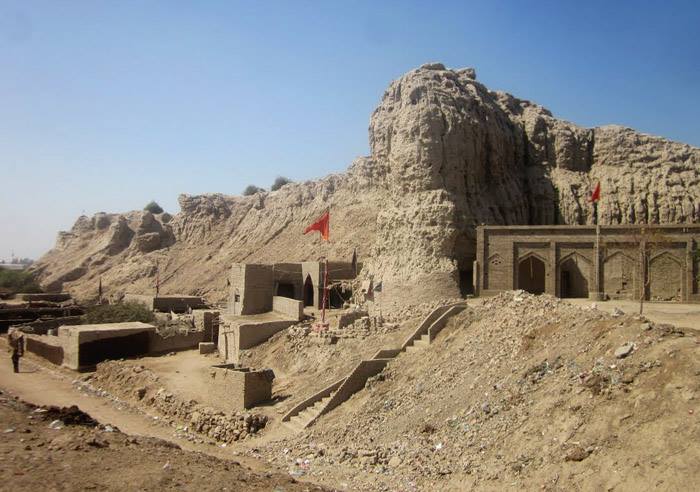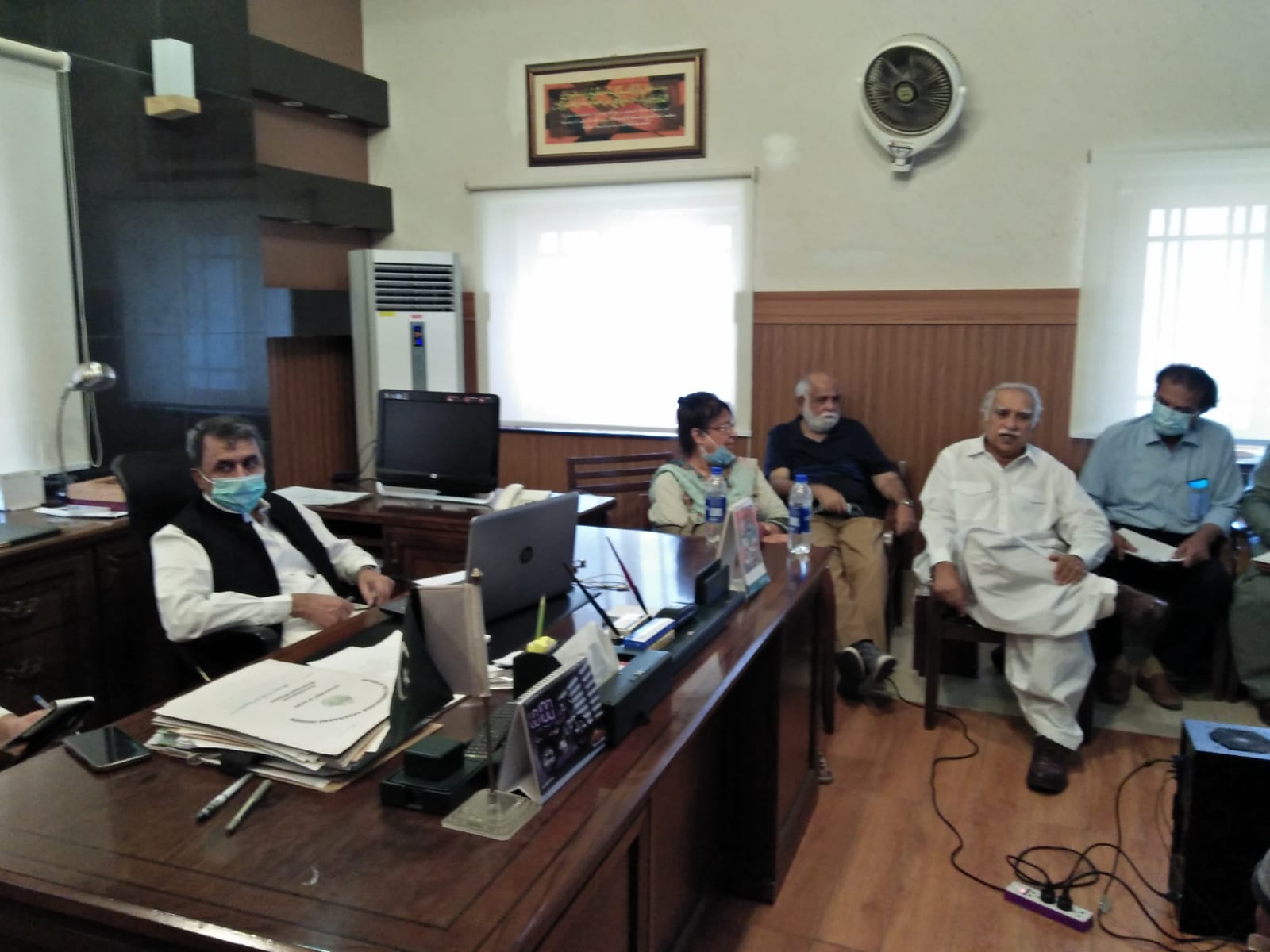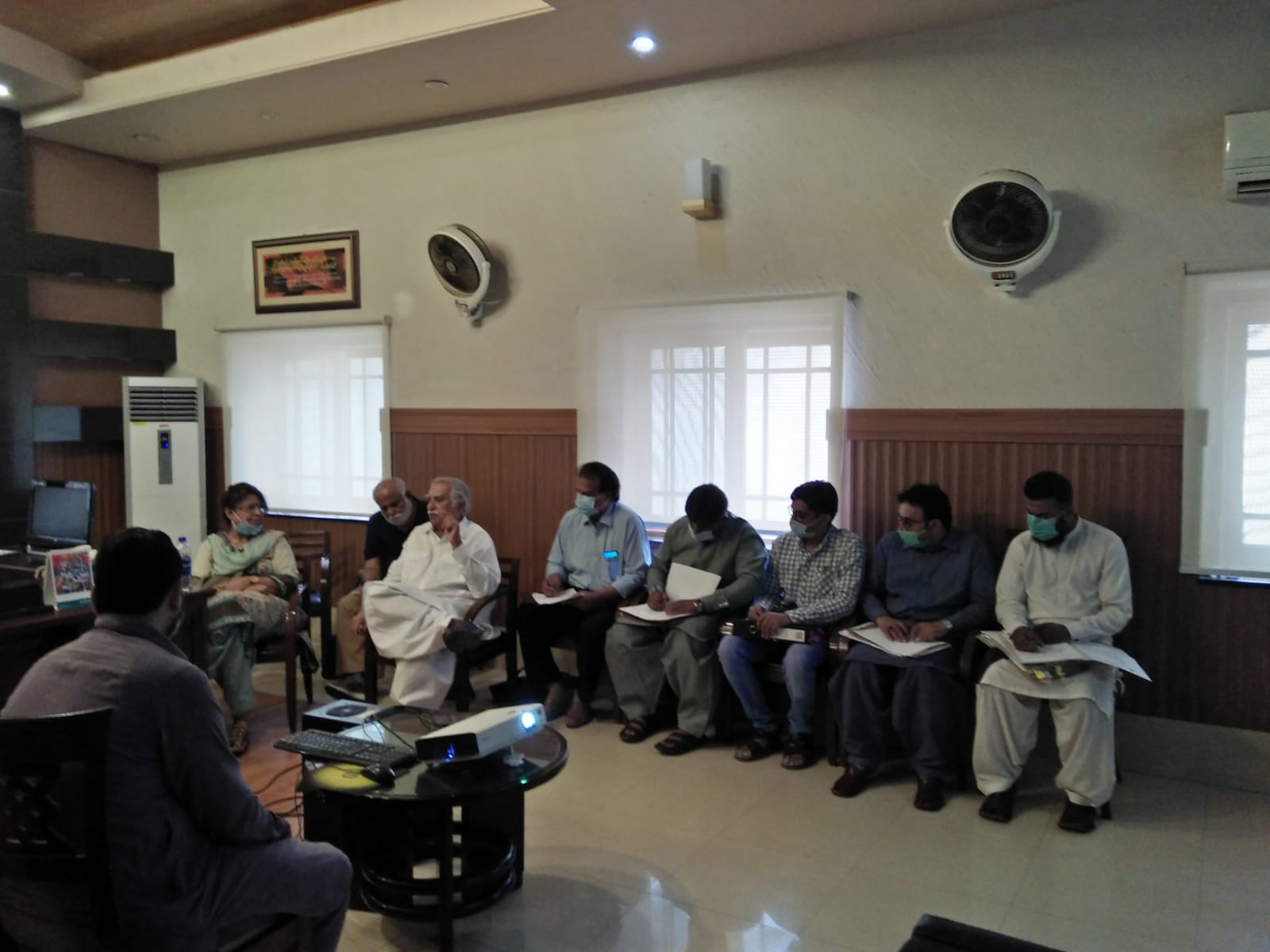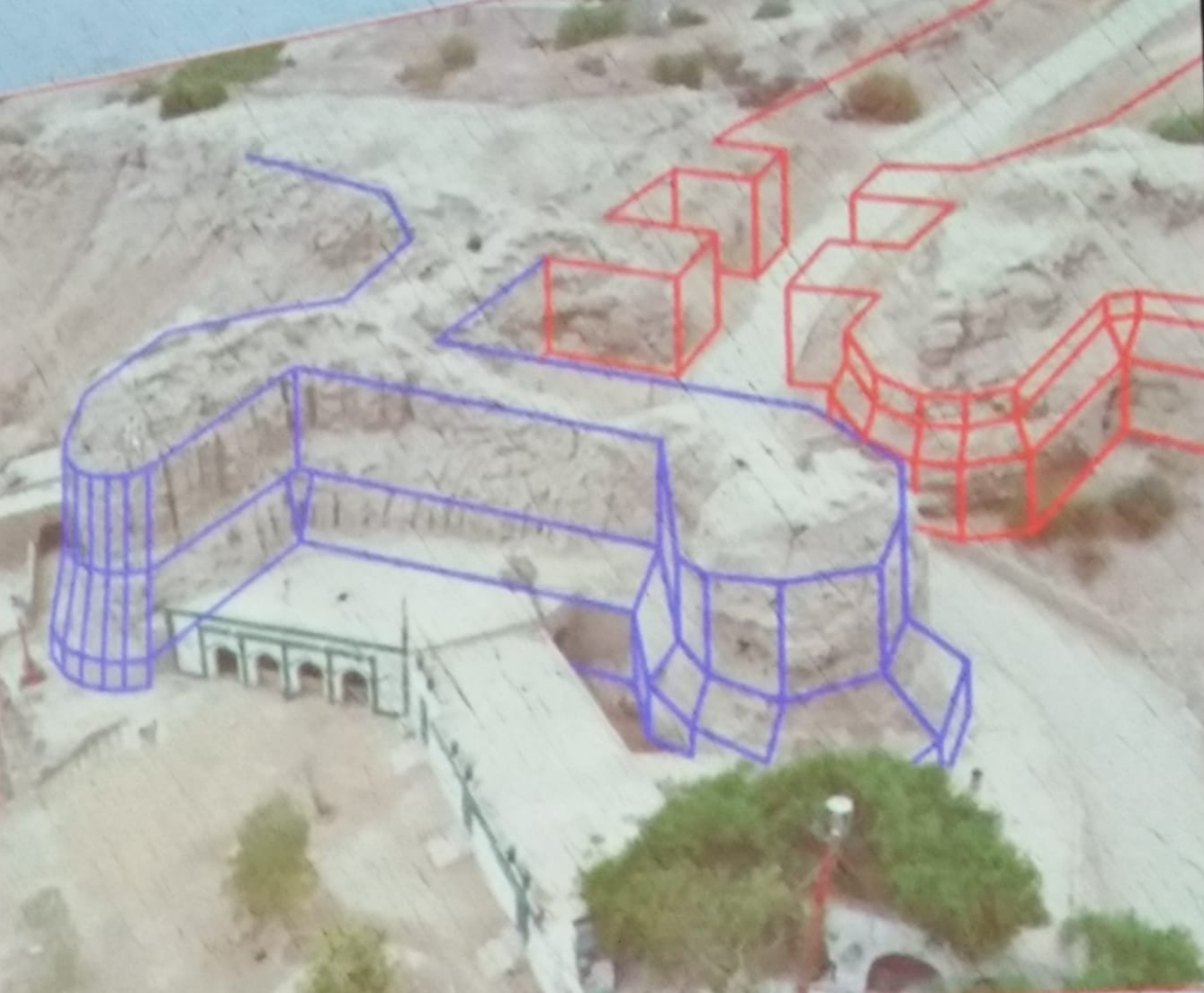
Removal of encroachments from surroundings of Sehwan Fort ordered
Sindh Courier Report
Hyderabad: Divisional Commissioner Hyderabad Muhammad Abbas Baloch held a meeting on Friday regarding rehabilitation and preservation of historic Sehwan Fort, which is said to be more than 2000 years old.
Endowment Fund Trust (EFT) for Preservation of the Heritage of Sindh has been assigned the responsibility of rehabilitation of the historic fort of Sehwan maintaining its originality. The EFT Secretary Abdul Hameed Akhund and other officials were present in the meeting.
Presiding over a meeting held at Camp Office Commissioner House, Baloch asked the EFT representatives to undertake the rehabilitation work in a way that the tourists and the pilgrims do not face any problem.
 Commissioner also directed the Jamshoro District Administration and other concerned departments for removal of encroachments from the surroundings of historic fort of Sehwan so that its rehabilitation work could be started.
Commissioner also directed the Jamshoro District Administration and other concerned departments for removal of encroachments from the surroundings of historic fort of Sehwan so that its rehabilitation work could be started.
He asked the EFT officials to point out the hurdles which they might face during the restoration work. “They should also submit proposals if they have.”
Commissioner Baloch said that the Fort is our national heritage.
 He further stated that the people who might be affected due to removal of encroachments would be properly compensated. He directed the concerned departments to extend their full cooperation to the EFT in restoration of Sehwan Fort.
He further stated that the people who might be affected due to removal of encroachments would be properly compensated. He directed the concerned departments to extend their full cooperation to the EFT in restoration of Sehwan Fort.
The meeting also discussed restoration of old Tapedar College building and establishing Revenue Department’s museum in Hyderabad.
Commissioner Abbas Baloch told the meeting that the court has ordered restoration of Dayaldas Club of Hyderabad in its originality while using it as marriage hall has been banned. “The encroachments from its surroundings have also been removed.”
 Earlier, EFT Secretary Mr. Akhund briefed the meeting on Fort Rehabilitation Plan.
Earlier, EFT Secretary Mr. Akhund briefed the meeting on Fort Rehabilitation Plan.
Pro-Vice Chancellor Shah Abdul Latif University Khairpur and archaeologist Dr. Neelofar Shaikh, Deputy Commissioner Jamshoro Fareeduddin Mustafa and officers of Sindh Building Control Authority and others attended the meeting.
It is pertinent to mention here that international archaeologists and researchers have different opinions about the history of the fort, while there are different opinions from local researchers too.
This mysterious fort of Sehwan is called Sikander’s Fort, Kafir Fort, Old Fort or now Sehwan Fort while the locals know the place as Utti Basti.
Lieutenant Willam Edwards, an official of the British army, wrote in his book ‘Sketches in Scinde’ written more than 171 years ago that old castle, the erection of which is attributed to Alexander is perhaps the only veritable relic of Greek, which can be traced in Sindh.
William expressed dismay at the worsening castle in Sehwan, which has now turned into a mound and hardly can be guessed that there had been a castle at that site. According to him the local people call it Kafir Qila [infidel castle] presuming that a cruel king used to live in it.
As per Willam Edwards research it is said that the fort was built by Alexander the Great that is why it’s known as Alexander’s Fort too. But many researchers believe and there are other evidences to show that the fort had existed before Alexander entered in Sindh and he might have repaired it for his army requirements.
History shows that the ruler of Sehwan was King Sambus in 326 BC, and King Sambus rebelled against Sikinder. At the time of invasion of Alexander, the Great, Sehwan was called “Sevestan”. It is estimated that the fort was built about 600 BC before the time of Rai Sahasi II as Rai Sahasi died in 603 AD.
According to Archaeologist the arches of the fort and other characteristics are oriental and not Grecian. The brick-work, like that of Kalan Kot Fort in Thatta, and the name “Kafir Qila” also points to the fact that Sehwan Fort may have been built during Hindu Rule and it is an old town of pre-Islamic period.
The ancient fort lies north of the town and is a massive burnt brick structure laid in mud mortar. The core of the fortification wall is filled with puddle earth. The defensive walls are roughly rectangular in shape, with traces of machicolations (a floor opening between the supporting corbels of a battlement, through which stones, or other objects, could be dropped on attackers at the base of a defensive wall). At the top of the fortification ground area there are modern structures built by Sindh Government. At the side of the Fort area, there are deep ditches dug by French Archaeological Mission.
_________________________